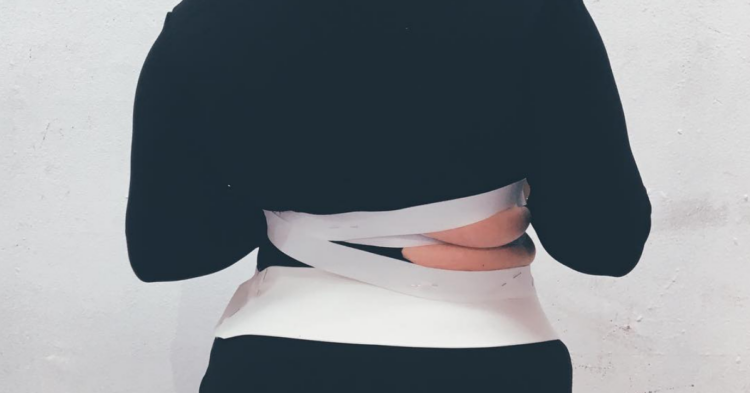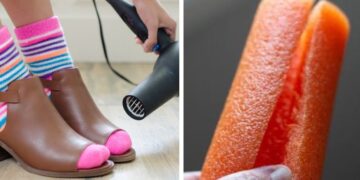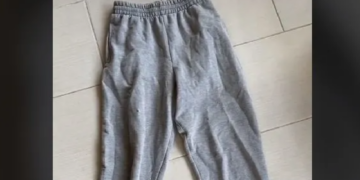While we’ve come a long way in learning to accept and love the bodies we have, we certainly are not even a little close to perfect. It’s great that we pay more attention to body inclusivity, but there are still standards even within this movement that still hang over our heads and are difficult to escape.
One designer is shedding light on this issue by purposefully accentuating a body aesthetic that retailers continue to leave out: rolls, folds, and contours of the body.
Body positivity is a term that’s making its way around mass media jargon, but what exactly does it mean?

Body positivity is more than just thinking positively about one’s body —it’s about the conscious practice of living ” peacefully and healthfully in our bodies.”
According to one of the core competencies of an organization called The Body Positive, the goal of body positivity is to “uncover the messages that have influenced [our] relationships with [our] body, food, and exercise.”

It is also meant for individuals to ” develop a weight-neutral, health-centered approach to self-care.”
In recent years, body positivity has taken a life of its own and has become popularly synonymous with normalizing curvier frames in mass media.
It has more to do with the representation and inclusion of different body types in magazines, on television, and on runways.
Thanks to models, celebrities, and social media users, there have been major strides in representation of diverse women’s bodies.
Companies like American Eagle’s sub-brand aerie have made it their mission to not airbrush or retouch their models’ photos.
Online fashion retailer Pretty Little Thing has also been praised for their body inclusivity efforts.
Not only are they beginning to show two models in photos wearing the same garments, but they are expanding their size range from 2-28.
Of course, model Ashley Graham has been a household name for the body positivity movement in fashion.
She has always been a major proponent for the body positivity movement, but made her mark when she became the first size 16 model featured on the cover for Sports Illustrated Swimsuit Issue back in 2016.
Thus, commercial body positivity is about showing the realities of women’s bodies that are often not shown in traditional mainstream media.
Marketing elites and companies finally understand that the small white frame that they traditionally made a standard is not the reality of those who actually purchase their products.
And this isn’t to shame anyone who is on the petite side, because body positivity is about accepting, nurturing, celebrating, and cherishing the bodies we have, no matter the size.
While it’s awesome that curvier bodies are making their way into the mainstream, there are other aspects of women’s bodies that are still excluded from the conversation.
One designer is aiming to assert herself into that conversation with her own statement clothing.
Karoline Vito is the designer behind these minimal, yet avant-garde, body-hugging clothes.

She is a MA graduate from the Royal College of Art in London, England.
Through her clothing, she is working to make transparent the parts of the body that women are often encouraged to hide.

Her first project was a “waist-clincher” that examined how parts of the body can be moved around and restructured by moving skin.
Her line is really a work of art.

She uses elastics, jersey materials, and other structured elements to bring attention to the specific parts of the body she wants to accentuate.
Her garments celebrate the squishy parts of our bodies instead of trying to conceal them and feel ashamed about them.

She is absolutely challenging beauty standards for women.
Try to think of an online clothing retailer that shows the body like this.
I bet you’re having a hard time!
When I see clothing retailer models online, I always wonder what the clothing will look like in real life un-posed scenarios.

It’s not often that we have our hands on our hips with our back straight and leg out, or that we crouch down.
We’re either simply standing or sitting, nothing too fancy.
Karoline’s designs show us how we can disrupt current understandings and discussions surrounding body positivity by confidently welcoming parts of the body that are continuously left out of the rhetoric.

I am 150% here for this.

















































